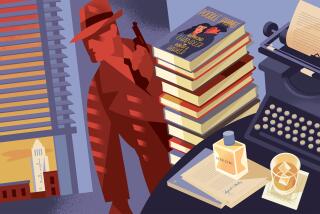A new reading of Hawthorne’s writing
STATE COLLEGE, Pa. — Nathaniel Hawthorne’s “The Scarlet Letter” was the furthest thing from Richard Kopley’s mind when the English teacher started working on what would become his first scholarly book.
But a string of literary coincidences and a bit of detective work have led to what one scholar calls a new way of looking at one of America’s best-known authors.
In a recent book from the University of Delaware Press, Kopley says Hawthorne transformed elements from “The Salem Belle: A Tale of 1692,” along with other popular stories from the period, in creating “The Scarlet Letter.”
Kopley, an associate professor of English at Penn State DuBois and president of the Poe Studies Assn., was actually researching Edgar Allan Poe when he came across a review Poe had written praising “A Legend of Brittany,” a poem by prolific writer and publisher James Russell Lowell. Unfamiliar with the poem, Kopley sought it out.
When he read it, Kopley was struck by the similarity between some passages in “Brittany” and passages in “The Scarlet Letter.”
At the end of “Brittany,” Kopley says, “there’s this powerful passage about the church organ, and I immediately thought of the climax of ‘The Scarlet Letter,’ in which Hawthorne draws an allusion to an organ in describing the powerful voice of Rev. Arthur Dimmesdale, the venerated preacher whose secret affair with Hester Prynne produced a child and led to Prynne’s public punishment and Dimmesdale’s private guilt.
“I sat with each text on one knee, looking back and forth and back and forth, and I saw that indeed my first impression was correct -- in fact, there was more than I realized of a correspondence between the two texts,” Kopley said.
It wasn’t the first time Kopley had found a passage he felt Hawthorne had transformed from another contemporary work. Eight years ago, Kopley wrote an article for the journal Studies in American Fiction describing similarities between Poe’s “The Tell-Tale Heart,” first published in the January 1843 edition of Lowell’s magazine the Pioneer, and Chapter 10 of “The Scarlet Letter,” in which a man creeps up as Dimmesdale sleeps and uncovers the “A” burned into Dimmesdale’s chest.
Kopley argues that Hawthorne intentionally transformed elements of those stories when creating his own.
“I think he had his story down first,” Kopley said, “but as he worked through it, I think it would occur to him to include gentle allusions to previous works that were related thematically to his present work.
“It seems to me to have been his habit of mind to lend a sort of depth and richness to whatever he was writing by gently alluding to three, four, five other works that relate to this incident. Not that they get in the way -- if you don’t see them, you’re fine, you still enjoy the story. But if you catch them, the story is obviously intensified and deepened.”
The linchpin of the argument came from that issue of the Pioneer, where Kopley found a review of “The Salem Belle,” a novel published in 1842 about a man named Trellison who accuses Mary Lyford of witchcraft after she spurns his romantic advances.
Kopley said the first two-thirds of the book bore little resemblance to Hawthorne’s. But he eventually found three passages he thinks influenced “The Scarlet Letter”:
* In the first, Lyford meets her brother, James, in a wooded area by a brook, where James seeks to comfort his sister. Kopley compares that to a passage in “The Scarlet Letter,” where it’s Prynne who seeks to comfort Dimmesdale.
* In the second, as Trellison encourages Lyford to escape by sea, saying he knows of a pirate ship in the harbor she could board, the narrator notes how odd it was that the intolerant Puritans seemed to tolerate piracy. Hawthorne, too, writes about a pirate ship in the harbor and the seeming inconsistency of Puritan morals.
* In the climactic scene, after Lyford’s escape, Trellison himself climbs the scaffold and declares his own guilt; the audience first is stunned, but then many say Lyford must have bewitched him and forced the confession. In “The Scarlet Letter,” Dimmesdale finally confesses his guilt from the pulpit, then dies; his congregation too sits in stunned silence, then dismisses his confession as a parable about how even the greatest men are capable of sin.
“It sounds like he’s on to something,” said John Grammer, professor and chair of English at the University of the South in Sewanee, Tenn.
Kopley’s book is an entirely new direction of Hawthorne scholarship, said Nina Baym, a Hawthorne scholar and English professor at the University of Illinois at Urbana-Champaign.
More to Read
Sign up for our Book Club newsletter
Get the latest news, events and more from the Los Angeles Times Book Club, and help us get L.A. reading and talking.
You may occasionally receive promotional content from the Los Angeles Times.






